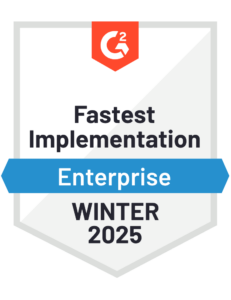How Digital Workflows for the Office of the CFO Enable Successful Transformation Across the Enterprise
Blog post
Share
As a result of the need to shift business operations, it’s clear that adopting automation and digitization is not only the new normal, but essential. In other words, it’s a must-have to build company-wide resiliency.
This accelerated path to digital transformation also helps to connect the Office of Finance with the overall organization to thrive effectively. For this reason, Chief Financial Officers (CFOs) need to play a more strategic role by guiding critical business decisions.
Using Financial Data to Drive Decisions Across The Enterprise
One of the main challenges the Office of Finance faces is that their data is typically siloed in spreadsheets. Even when there is no sound financial transformation ingenuity in place, manual processes create major roadblocks around the Record to Report (R2R) process. Plus, data that’s not accessible to the wider organization who need visibility into that data will find it difficult to make strategic decisions effectively.
Despite acknowledging the need for technological advancement in the financial close, siloed and manual Office of Finance operations are still a reality for most organizations. According to Forrester’s report entitled “Leveraging Advanced Technology To Succeed In A Complex Financial Environment,” 90% of survey respondents admit to experiencing challenges in the financial close process, partly due to manual errors. What’s more, 73% of those surveyed also said that their organization does not have any automated processes, and therefore deal with inefficiencies regularly.
Think about it: data living in a silo can’t provide the business with timely data-driven decisions. Siloed processes prevent the entire organization from working efficiently, especially when communicating relevant data and status across the enterprise.
The Office of Finance needs to merge its financial transformation strategy with the organization’s overall digital transformation strategy. This requires working with the IT department to integrate technology solutions to prioritize and clearly communicate the benefits of automation through connected workflows and high levels of visibility for the organization’s leadership.
Forming Strong Relationships to Drive Digital Transformation
To ensure an organization is prepared to drive digital transformation, both the CFO and CIO need to work together. The same Forrester report states that both these types of leaders complement each other well in that the CFO makes decisions for the finance team to deliver value, whereas the CIO can enable teams (including finance) by implementing relevant systems and technology.
A strong collaboration between these leaders makes sense considering both roles aim to drive business longevity and success. By working together, it allows for more agility and efficiency — both essential for long-term success.
Effective collaboration can also improve financial close processes and procedures. By working together, both the CIO and CFO can accomplish their goals by eliminating the risk of continuing to use outdated legacy tools like error-prone spreadsheets, that were never designed to be used to reconcile the books for multi-million dollar organizations.
Establishing a successful relationship between the CIO and CFO ensures that employees are empowered as the backbone of an organization. Using digital workflows allows employees to collaborate and grow, further driving value to the organization.
How CFOs Can Drive Efforts for Digital Transformation
Digital transformation is no longer a “nice to have” – it is essential for an organization to succeed in today’s business environment. CFOs need to standardize and automate their processes or risk falling behind their competition.
The ability to merge an organization’s financial and digital transformation initiatives requires solutions that work at an enterprise level to ensure workflows and processes retain what the Office of Finance requires the most. These include risk management, oversight, controls and audit traceability.
Organizations that implement holistic Record to Report software solutions will be able to provide pertinent financial data to the rest of the organization in a more timely manner. Investing in solutions built for this purpose will also help seamlessly integrate into the broader organization’s workflow. Leaders can therefore work together more efficiently and effectively.
To help achieve the goal of a fully connected organization, Trintech has partnered with ServiceNow® to provide CadencyDirect®, the only native Built On Now® app for the ServiceNow Platform for the financial close to kickstart your digital transformation. CadencyDirect® is powered by Cadency as the most complete R2R solution for enterprise organizations and utilized by the majority of the Fortune 100.
CadencyDirect complements and extends financial operations management so that CFOs and their teams can digitize workflows across the financial close process, reducing complexity and risk, accelerating the overall process, and driving a greater experience for finance teams.
– Karel Van Der Poel, Senior Vice President of ServiceNow®
Leveraging existing technology platforms, like the ServiceNow platform, that is already a part of the larger digital transformation initiative, allows the Office of Finance a faster pathway for integration across the organization.
By automating and standardizing processes, CFOs will help ensure the Office of Finance has its rightful place in digital transformation in order to enable key stakeholders with real-time visibility of financial data critical to driving confident business decisions.
Visit CadencyDirect® to learn more.
This article was originally published on CFO Dive.






